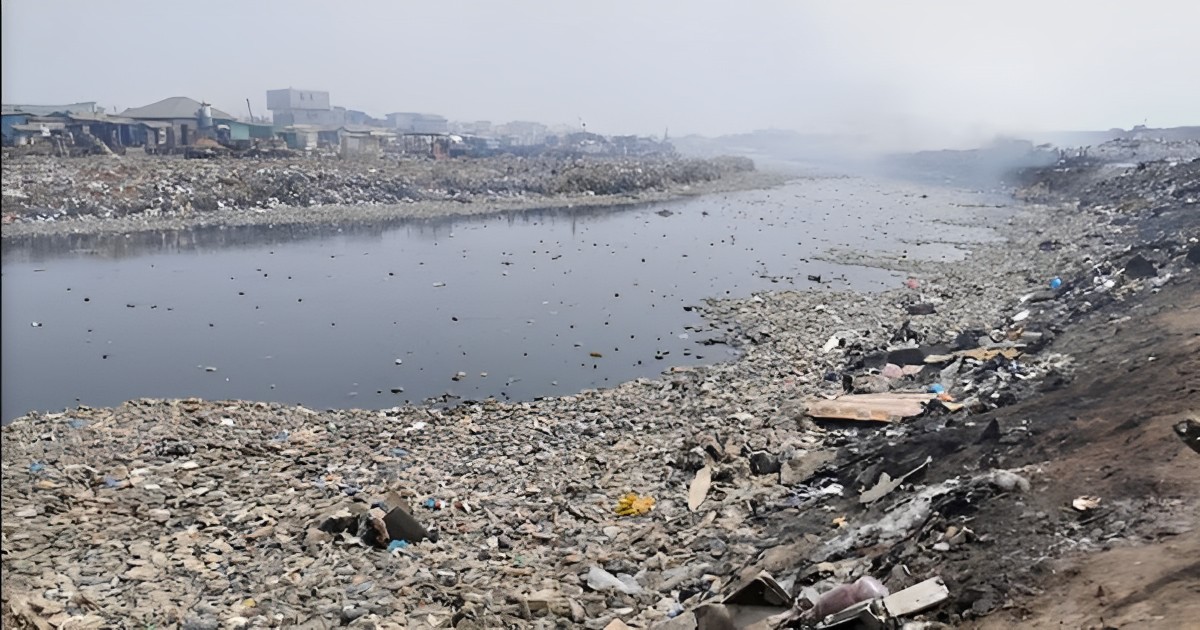Water is a vital resource that sustains life on Earth. However, increasing pollution and contamination have become significant environmental issues affecting the quality and availability of this precious resource. By examining water contamination, we can gain insights into broader environmental concerns and the urgent need for sustainable solutions.
According to a post by Earth5R, water pollution is becoming one of the world’s most serious environmental issues. Water supplies have been contaminated as a result of rapid population increase, urbanization, and industrialization, which is harmful to ecosystems, the well-being of humans, and the ecosystem as a whole.
Table of Contents
In this article, we will explore various environmental issues related to water contamination while shedding light on their causes, consequences, and potential solutions.
The Impact of Industrial Pollution:
Industrial activities release harmful chemicals and toxins into water bodies, leading to water contamination. This contamination has far-reaching consequences for both ecosystems and human health. Heavy metals, such as lead and mercury, are common pollutants that can accumulate in aquatic organisms and pose risks to human consumption. Additionally, industrial chemicals, such as PCBs and dioxins, can disrupt the hormonal systems of aquatic species and have long-term ecological impacts.
To address industrial pollution, strict regulations and enforcement are necessary. Industries must adopt cleaner production practices, implement effective waste management systems, and prioritize the use of environmentally friendly technologies. Investing in research and development of green alternatives can also minimize the use of hazardous substances in industrial processes, thus reducing the risk of water contamination and promoting a sustainable industrial sector.
Military Contamination of Water Resources:
Military activities can also contribute to water contamination, with the Camp Lejeune water contamination incident serving as a stark example of the consequences. Camp Lejeune’s water contamination crisis led to severe health issues for those exposed and sparked legal action. The contamination affected tens of thousands of individuals, resulting in illnesses such as cancer, birth defects, and other chronic diseases.
In response to the incident, the victims filed a Camp Lejeune lawsuit against the U.S. military. The lawsuits allege that the military was careless toward environmental protection and failed to prevent the water contamination at Camp Lejeune. The lawsuits also seek settlement for the significant physical, emotional, and financial hardships that the victims of the incident had to endure.
According to TorHoerman Law, the legal consequences of the Camp Lejeune incident highlight the pressing need for stricter regulations and monitoring of military activities to prevent future contamination incidents. It underscores the responsibility of the military to prioritize environmental stewardship and ensure the protection of local communities and natural resources from harmful pollutants originating from military operations.
Agricultural Runoff and Water Contamination:
Agriculture plays a vital role in feeding the world’s growing population, but it also contributes to water contamination through runoff. Excessive use of fertilizers and pesticides leads to nutrient imbalances and chemical pollution in water bodies. Nitrogen and phosphorus from fertilizers cause eutrophication, resulting in harmful algal blooms that deplete oxygen levels in water and harm aquatic organisms.
According to the National Water Quality Assessment, agricultural runoff is the major cause of water quality effects in waterways, the third leading source in lakes, and the second greatest source of wetlands degradation.
To combat agricultural runoff, sustainable farming practices are essential. These include precision agriculture techniques to optimize fertilizer and pesticide use, buffer zones and vegetative cover to filter runoff, and improved irrigation practices to minimize water wastage. Encouraging farmers to adopt organic farming methods and promoting the use of natural alternatives to chemical inputs can further reduce the environmental impact of agriculture.
Urbanization and Water Pollution:
Rapid urbanization poses significant challenges to water quality as cities expand and infrastructures struggle to keep up with the growing population. One of the major sources of water pollution in urban areas is sewage and stormwater runoff. Improperly treated sewage and runoff from roads and urban surfaces carry pollutants such as bacteria, heavy metals, oil, and chemicals into water bodies, posing risks to both human health and the environment.
To mitigate urban water pollution, urban planning strategies need to incorporate green infrastructure. This includes the construction of permeable pavements, green roofs, and rain gardens to capture and treat stormwater naturally. Implementing efficient wastewater treatment systems and promoting water conservation practices in households and industries are also crucial for minimizing urban water pollution and ensuring sustainable water management in cities.
Fracking and Groundwater Contamination:
The extraction of natural gas through hydraulic fracturing, or fracking, has revolutionized the energy industry but has also raised concerns about water contamination. Fracking involves injecting water, chemicals, and sand deep underground to release trapped natural gas. Accidental spills, leaks, or improper disposal of fracking fluids can contaminate groundwater, which serves as a crucial source of drinking water for many communities.
The United States Environmental Protection Agency has also discovered scientific evidence that operations in the hydraulic fracturing water cycle can have an impact on drinking water supplies under certain conditions. The frequency and severity of impacts can vary depending on the mix of hydraulic fracturing water cycle activity and local or regional-scale conditions.
The potential risks of fracking to water resources highlight the importance of strict regulations and monitoring. Robust well construction standards, safe handling and disposal of fracking fluids, and comprehensive environmental impact assessments are necessary to prevent groundwater contamination. Alternative energy sources and increased investments in renewable energy technologies can also reduce reliance on fossil fuels and mitigate the environmental risks associated with fracking.
Microplastics: Tiny Threats to Water Quality:
Microplastics, tiny plastic particles less than 5mm in size, have become a pervasive water pollutant with detrimental effects on ecosystems. These microplastics enter water bodies through various sources, including the breakdown of larger plastics, microbeads in personal care products, and synthetic fibers from clothing. They pose a significant threat to aquatic organisms as they can be ingested, leading to physical harm, toxic exposure, and disruption of the food chain.
To address the issue of microplastic pollution, concerted efforts are required. This includes reducing plastic waste through recycling and waste management initiatives, banning or phasing out microbeads in personal care products, and promoting the use of biodegradable materials. Raising awareness among the general public about the environmental impacts of microplastics and encouraging responsible consumer choices can also contribute to mitigating this threat to water quality.
Climate Change and Water Contamination:
Climate change exacerbates water contamination by altering precipitation patterns, increasing the frequency and intensity of storms, and intensifying droughts. These changes can have profound impacts on water availability, water quality, and the integrity of water infrastructure. Heavy rainfall events can overwhelm aging stormwater systems, leading to sewage overflows and contaminant spills into water bodies. Droughts reduce water levels, concentrating pollutants and increasing the risk of contamination.
Adapting water management strategies to climate change is crucial to prevent water contamination. This includes implementing sustainable stormwater management systems capable of handling extreme precipitation events, improving water storage and distribution infrastructure, and promoting water conservation measures. Integrated approaches that consider the interconnectedness of water resources and ecosystems can enhance resilience and safeguard water quality in the face of climate change challenges.
In Conclusion:
Water pollution investigation offers us significant insights into the larger environmental concerns we face today. Water quality and availability are deteriorating as a result of industrial pollution, military operations, agricultural runoff, urbanization, hydraulic fracturing microplastics, and global warming.
These challenges have far-reaching implications for ecosystems, human health, and the future of our planet. However, the instances and solutions shown in this article emphasize the possibility for change as well as the critical need for sustainable behavior.
Stricter laws, sustainable agricultural practices, green buildings, sustainable energy extraction, and coordinated efforts to decrease plastic waste are just a few of the major measures to combat water pollution and maintain the long-term survival of this vital resource. By emphasizing environmental stewardship, we can strive toward a future in which everyone has access to clean water and the health of our world is preserved for future generations.
Visit for more best articles





